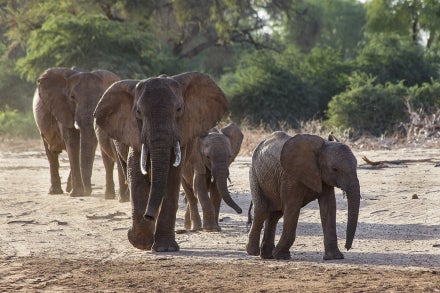FOR IMMEDIATE RELEASE
CONTACT:
San Diego Zoo Wildlife Alliance
Public Relations
619-685-3291
publicrelations@sdzwa.org
sdzwa.org
NEWS RELEASE
San Diego Zoo Wildlife Alliance’s Wildlife Biodiversity Bank Achieves Major Milestone: 11,000th Cell Line Added to Frozen Zoo®
Living Cell Lines Offer Hope for Species Conservation
SAN DIEGO (Nov. 30, 2023) – Scientists at San Diego Zoo Wildlife Alliance have achieved a major milestone in saving wildlife species: With a blue-eyed black lemur’s cells recently added to its Wildlife Biodiversity Bank’s Frozen Zoo®, the nonprofit conservation organization’s unique collection of genetic material now contains 11,00o individual cell lines from more than 1,250 species and subspecies—some critically endangered. No other biobank in the world has a comparable number of living cell lines, with the potential to reverse losses of genetic diversity and contribute to population sustainability for endangered and threatened wildlife species.
“Achieving the milestone of 11,000 individual cell lines reflects decades of dedication to wildlife conservation and scientific innovation,” said Marlys Houck, curator of San Diego Zoo Wildlife Alliance’s Frozen Zoo. “These living cells hold the unique genetic diversity of each individual, including many who never reproduced. Not only can we document chromosome numbers and genome sequences of rare and endangered species from the cells, but they can also be used to help prevent the extinction of endangered species.”
Established nearly 50 years ago, the San Diego Zoo Wildlife Alliance’s Frozen Zoo includes irreplaceable living cell lines, gametes and embryos, providing an invaluable resource for conservation, assisted reproduction, evolutionary biology and wildlife medicine.
A team of cell culturists, led by Houck, work year round to collect, grow and preserve cell lines. The team collects skin or other tissue from a variety of mammals, birds, reptiles, amphibians and fish, either after an animal has died or during a routine veterinary exam. From those tissues, living fibroblast cells are grown, and then stored in liquid nitrogen freezers at a temperature of -320 degrees Fahrenheit. Growing cells from various types of wildlife differs, so the team must use their expertise in developing specific conditions necessary to cyropreserve individual species.
A recent, noteworthy accomplishment for the cell culture team was freezing a total of 48 cell lines from 46 new individuals in August 2023. Seven of these were also new species to the collection, including a green and black poison dart frog, Argentine racer (snake), Inca tern (bird) and red-and-blue lory (endangered bird). The last time 40 or more new individuals were cryopreserved in a single month was June 2015. An average of 245 new individuals are added to the collection annually, approximately 40 of which represent species that were not previously represented in the Frozen Zoo.
The San Diego Zoo Wildlife Alliance’s Frozen Zoo team receives and shares samples and data with hundreds of scientific collaborators worldwide to aid in conservation efforts. In addition, they offer their expertise to other organizations on how to acquire samples from deceased wildlife, establishing cell lines and studying chromosomes.
“Dr. Kurt Benirschke, who founded the Frozen Zoo in 1975, had this vision from its inception and predicted there would be future uses for the cells beyond anything imaginable in the 1970s,” said Houck. “Recently, skin cells stored in the San Diego Zoo Wildlife Alliance’s Frozen Zoo were provided to collaborators to produce genetically unrepresented clones of two endangered species: a black-footed ferret and two Przewalski’s horses.” With applications including assisted reproduction, stem cell technology, evolutionary biology and wildlife medicine, the Frozen Zoo has the potential to become one of the most important resources for the future of species conservation.
###
About San Diego Zoo Wildlife Alliance
San Diego Zoo Wildlife Alliance, a nonprofit conservation leader, inspires passion for nature and collaboration for a healthier world. The Alliance supports innovative conservation science through global partnerships. Through wildlife care, science expertise and collaboration, more than 44 endangered species have been reintroduced to native habitats. Annually, the Alliance reaches over 1 billion people, in person at the San Diego Zoo and San Diego Zoo Safari Park, and virtually in 150 countries through media channels, including San Diego Zoo Wildlife Explorers television programming in children’s hospitals in 13 countries. Wildlife Allies—members, donors and guests—make success possible.



